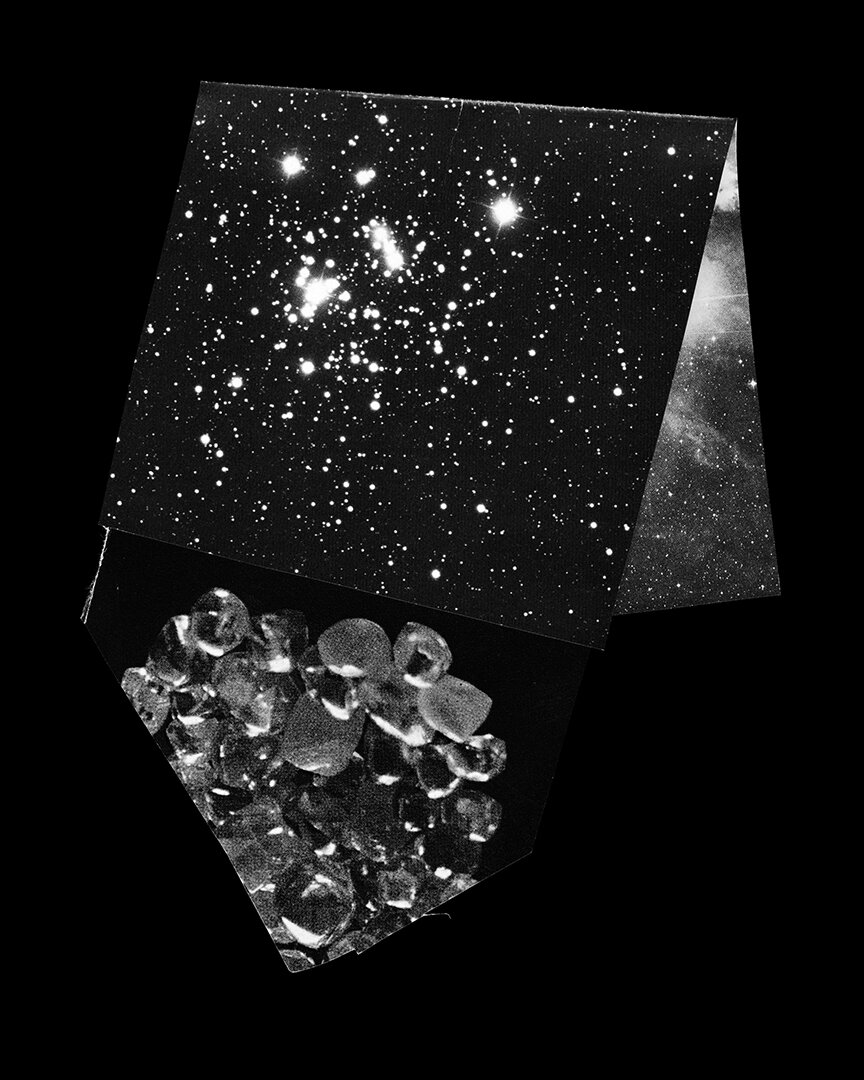
affixed star

a roll for past light

to locate where we both exist

to imagine standing at 40°S and 68°W

as two bodies near in a field of stars

as the chromosphere becomes visible, or to finally see what has always been there

the chances of standing under totality

if one could wait years for a photograph

the similarity of mercury (shown here) to the moon

to narrow an average distance of 238,855 miles

to assemble the lunar surface

constructing the moon, or mercury

observed only once and may one day reappear

ice and dust as they travel away from the sun

the universe still teems

vast volumes of cosmic dust

coronae

a realization that galaxies form in clusters

as light leaves for the universe

coexistence of the dark and the bright

history of light

a tear

to demonstrate the existence of bodies which we cannot ever expect to see

amid a vast stellar company

if one could locate the spot about which two stars rotate

the presence of garnet

as above, so below

all is silent there

ways of knowing

self-luminous, or to see stars in your eyes

to safely archive an eclipse

a wrinkle

approaching atmospheres

point of closest approach

reading the mount of luna

we see, in our imagination, millions

trace evidence

the spectral lines between us

on dark stars

considering palmistry

untitled (mediated sight)

i and you are here
that which we cannot ever expect to see is a series of poetic photomontages that consider photography's relationship to the universe. What does it mean to remember something seen yet never encountered with our bodies? How might we get closer to knowing the unknowable? With visible tears and folds, the images meditate on the impossible physical relationship to galactic bodies of unfathomable scale and at impossible distances, yet able to be held by the hand through the photographic object. Source material for the photographs and titles ranges from images and text collected from magazines, books, and other instructional or scientific texts.
This impossibly intimate and hands-on relationship to the cosmos is underscored by printing the works in the black-and-white darkroom. Each piece begins with a physical arrangement of collected image material as collage, which is scanned on a flatbed scanner and then printed in the darkroom via a digital negative. This combination of analog and digital processes allows each collage to exist as a multiple, as well as enabling images to be re-used across other works.
At its core, this series considers how looking towards the infinity of the cosmos might serve to close distance. Far apart though we may be, all of us still inhabit a single planet and, as such, exist under the same sky. We may be at the furthest points from our loved ones, but anyone looking upward at the night sky gazes upon the same moon. We gaze upon the same blue of the atmosphere at the same time as other bodies on earth, even if we stand alone. In the grand expanse of the universe, we are remarkably close.